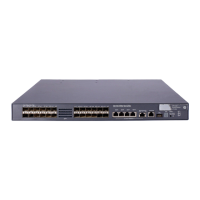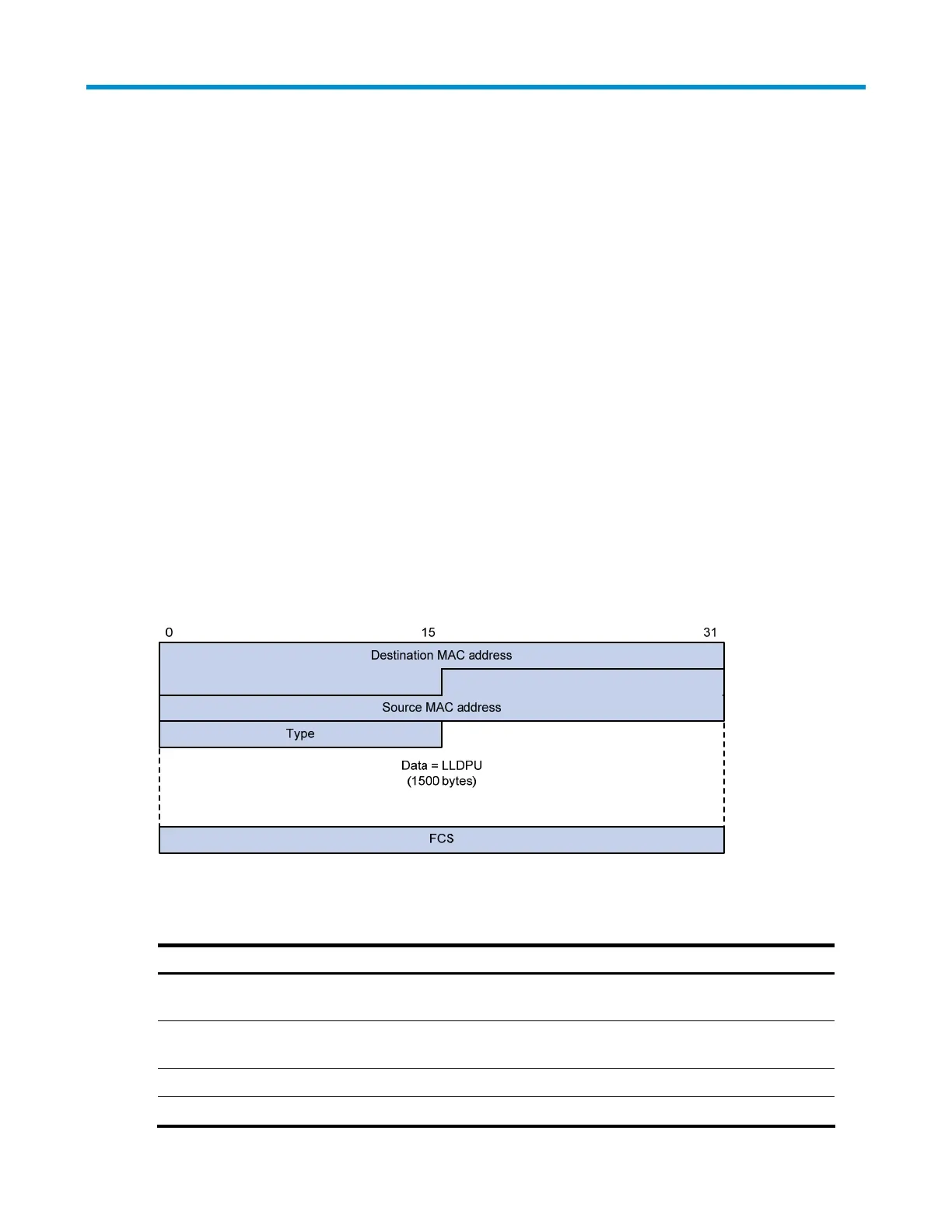200
LLDP configuration
In a heterogeneous network, it is important that different types of network devices from different vendors
can discover one another and exchange configuration for interoperability and management sake. A
standard configuration exchange platform was created.
The IETF drafted the LLDP in IEEE 802.1AB. The protocol operates on the data link layer to exchange
device information between directly connected devices. With LLDP, a device sends local device
information (including its major functions, management IP address, device ID, and port ID) as TLV (type,
length, and value) triplets in LLDPDUs to the directly connected devices, and at the same time, stores the
device information received in LLDPDUs sent from the LLDP neighbors in a standard MIB. It allows a
network management system to fast detect Layer-2 network topology change and identify what the
change is.
For more information about MIBs, see the Network Management and Monitoring Configuration Guide.
Basic concepts
LLDPDUs
LLDP sends device information in LLDPDUs. LLDPDUs are encapsulated in Ethernet II or SNAP frames.
1. Ethernet II-encapsulated LLDPDU format
Figure 66 Ethernet II-encapsulated LLDPDU format
The fields in the frame are described in Table 23:
Table 23 Description of the fields in an Ethernet II-encapsulated LLDPDU
Field Description
Destination MAC address
The MAC address to which the LLDPDU is advertised. It is fixed to 0x0180-
C200-000E, a multicast MAC address.
Source MAC address
The MAC address of the sending port. If the port does not have a MAC
address, the MAC address of the sending bridge is used.
Type The Ethernet type for the upper layer protocol. It is 0x88CC for LLDP.
Data LLDPDU

